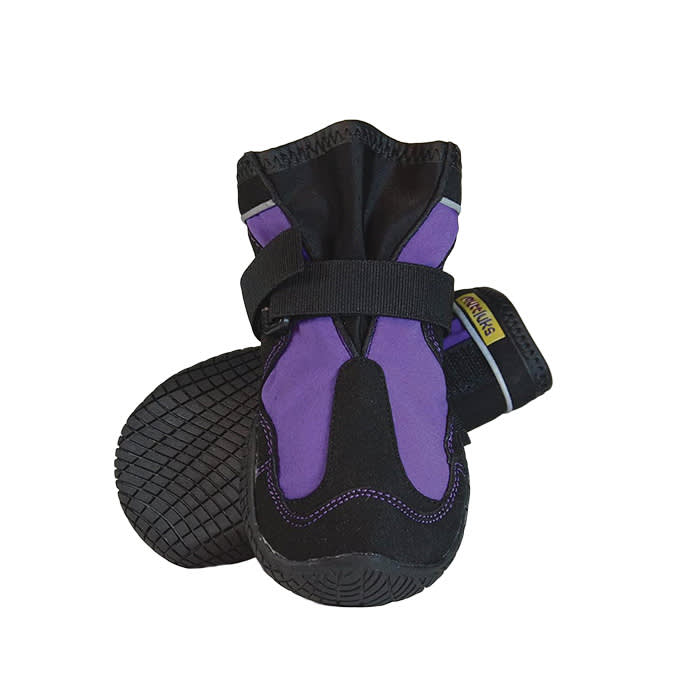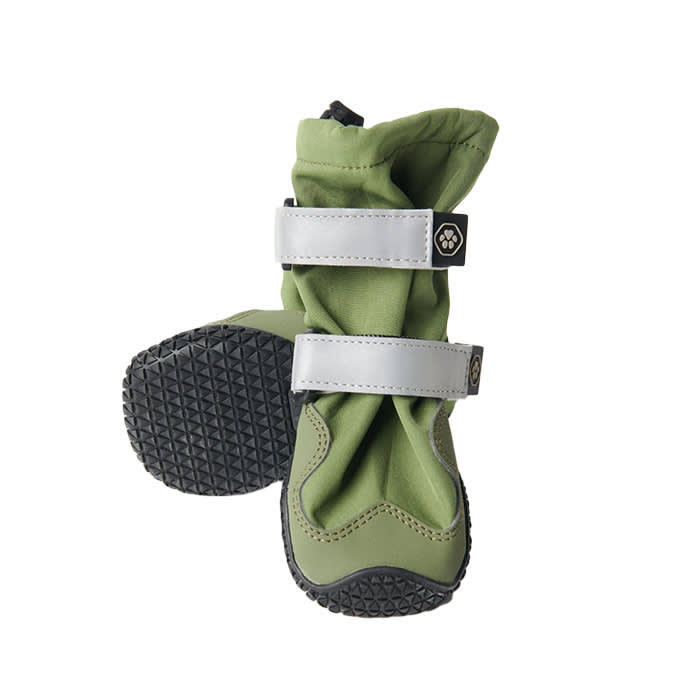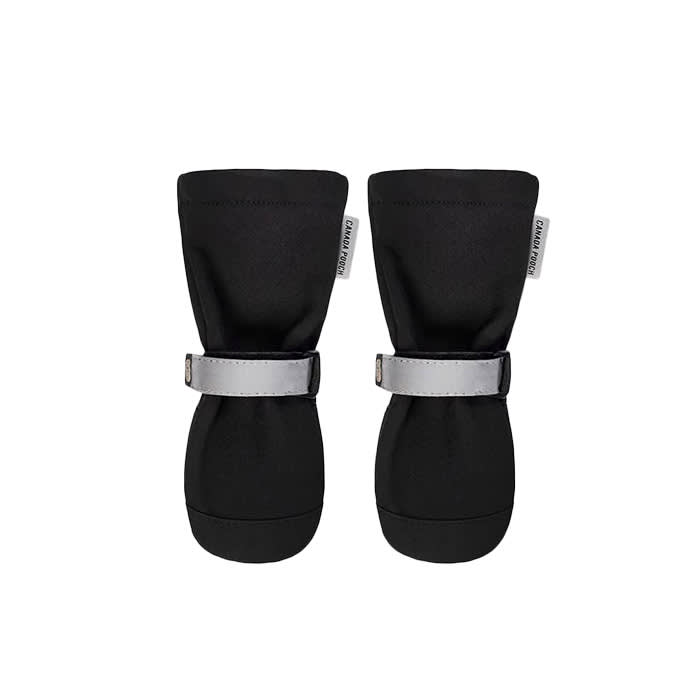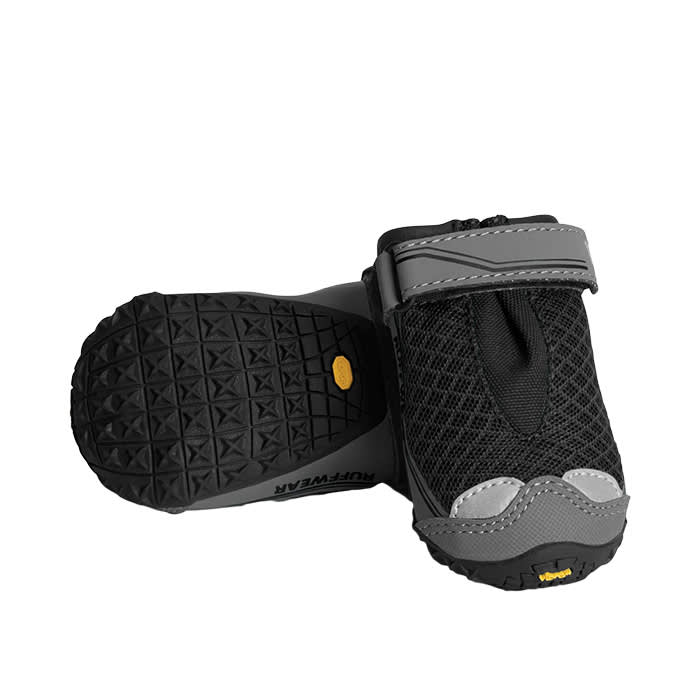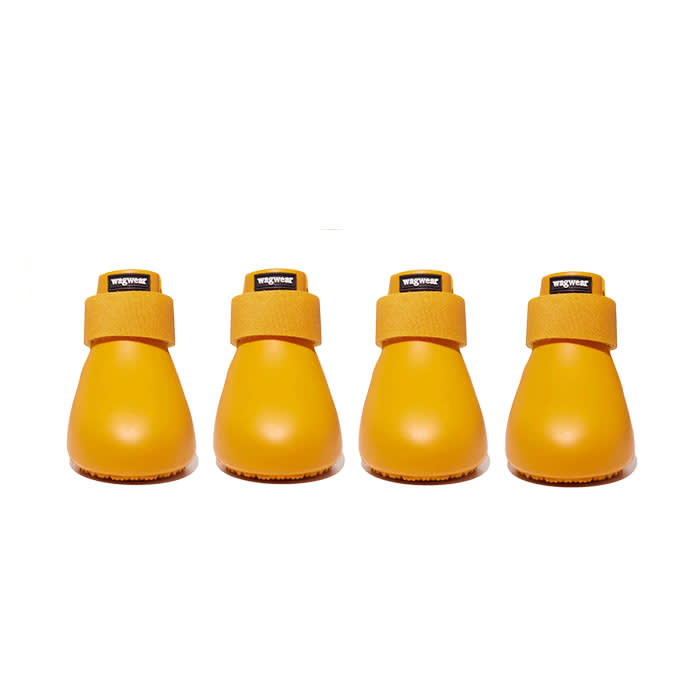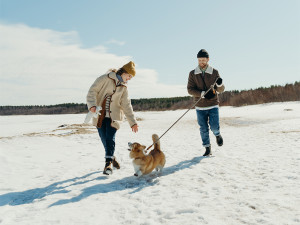The Best Winter Boots for Dogs in 2024
Here’s why you might want to protect those toe beans.

share article
In This Article:
The Best Winter Boots for Dogs opens in a new tab Small-Dog Winter Bootsopens in a new tab Medium-Dog Winter Bootsopens in a new tab Large-Dog Winter Bootsopens in a new tab Best Non-Slip Winter Boots for Dogsopens in a new tab Best Waterproof Bootsopens in a new tab
For those of us navigating winter with our pups, walks often feel like a tactical operation — get in and out before frostbiteopens in a new tab becomes a threat or your neighbor Susan tries to strike up a convo (and, let’s admit it, so we can swiftly return to our riveting binge-watching session). Yet, in our haste, we may overlook a crucial element in our dog’s winter ensembleopens in a new tab: dog booties. Far from being a mere fashion statement, these paw protectors play a vital role in shielding your dog’s precious paws from the perils of icy terrain. They’re a blend of practicality and panache that’ll have your pooch turning heads (and tails) on those snowy walks.
When selecting dog boots for winter, the most important thing is finding the right fit — too small, and you’ll crush their paws, and too big, your dog might end up with some fancy dance moves as they attempt to navigate the oversized boots.
The Goldilocks principle applies: Aim for that perfect fit, not too small, not too big, but just right for a snug and stylish look. In addition to choosing boots with the right fit, you should make sure they’re insulated to shield those sensitive paws from the wintry chill. Ideally, they also come equipped with water resistant material to fend off snow and slush.
If all this sounds overwhelming, and you’re already stressed about buying your own shoes, we’ve compiled a list of the best winter dog boots so you can get your dog geared up and strutting the snowy sidewalksopens in a new tab in no time.
Does my dog need winter boots?
As much as we love those viral videos of dogs awkwardly stumbling in their brand new boots, dogs don’t need boots in all situations. Yes, boots can be great paw protectors in extreme conditions — but their necessity depends on the temperature, how long you’ll be outside, what type of snow it is, and most importantly, your dog’s individual needs.
The Wildest chatted with Dr. Colleen Lambo, veterinarian at The Vetsopens in a new tab about when it’s necessary to put winter boots on your dog. In general, veterinarians recommend dogs wear winter boots in the following conditions:
Cold temperatures: Dogs may need boots in extreme cold when walking on icy sidewalks or snow, as these conditions can cause discomfort or frostbite.
Snow and ice melt chemicals: If your area uses deicing chemicals on roads and sidewalks, these substances can be harmful to your dog’s paws.
Sharp objects: In snowy or icy conditions, hidden sharp objects, like glass or debris, can cause paw injuries.
Salt and sand: These substances used for traction can be abrasive to a dog’s paw pads, causing irritation or injury.
Whether or not your dog needs boots also depends on factors such as breed, age, and individual health issues. “While dog boots can be beneficial for many dogs during winter, certain breeds and individual dogs may need them more,” Dr. Lambo explains. “Dogs with short fur or breeds that are not naturally suited for cold weather may need boots. Some dogs have more sensitive paws, and boots can provide extra protection.”
Dr. Lambo also mentions that seniorsopens in a new tab and puppies are good candidates for dog boots, because they may struggle with temperature regulation and are more vulnerable to the cold. At the end of the day, it’s best to ask your veterinarian if your dog should use boots.
Signs your dog should wear winter boots
When it comes to dog boots, it can be tempting to forego this wardrobe addition because it’s yet another step in your dog walking routine. But there are some key indicators that winter dog boots are a necessity, and they may end up saving you time and money down the road (aka vet bills for getting that paw injury treated). Here are some signs your dog should wear winter boots:
Frequent lifting of paws or limping during walks in the cold
Excessive licking or chewing on their paws after exposure to snow or ice melt
Development of redness, cracks, or sores on paw pads
Signs of discomfort, shivering, or unwillingness to continue the walk in wintry conditions
The best winter boots for dogs
When choosing the best dog boots for winter, we looked at features like fit, material, price, water resistance, and traction. Whether you’re looking to outfit a gentle giant or a pocket-sized pup, here are our top picks.
Best small-dog winter boots
Best medium-dog winter boots
Best large-dog winter boots
Best non-slip winter boots for dogs
Best waterproof boots for dogs
DIY winter boots for dogs
If you’re wondering how to make winter boots for your dog, it can be a relatively simple process. Now, let’s set expectations straight: These homemade booties won’t quite rival the high-end pet store models, but they’ll do the trick for short outdoor trips. Grab some fleece, canvas, or non-slip material of your choice to keep those paws nice and toasty.
Create a sewing pattern by tracing your dog’s paw and adding about a half inch around the border. Sew the outside edges and leave a hole for your dog’s paw to go in. Once you slip the material around your dog’s paws, tie a lace around it to secure it. While they may not be your winter trailblazing go-to, they’re perfect for quick potty ventures in the chilly outdoors.
How to choose the right winter boots for your dog
There are hundreds of winter dog boots on the market, so it can be hard to figure out which ones to buy. Do you go for the heavy duty, water resistant ones or opt for simple slip-ons? Well, it depends on a few factors. According to Dr. Lambo, here’s what you should consider when choosing winter boots for your dog:
Size and fit: Measure your dog’s paws to ensure the boots fit comfortably. They should be snug but not too tight.
Durability: Look for boots made of durable materials that can withstand various conditions.
Traction: Choose boots with good traction to prevent slipping on icy surfaces.
Waterproofing: Waterproof boots are essential for keeping paws dry in snowy and wet conditions.
Ease of application: Select boots that are easy to put on and take off, as this will make the process smoother for both you and your dog.
Budget: While your dog deserves the best, consider your budget when selecting winter boots. Finding the right balance between quality and cost ensures protected paws without pinching pennies.
Tips for getting dogs used to wearing boots
Finding the best winter dog boots for your pup is the first step — now getting them to wear them is a whole other feat. When trying to get your dog to get used to wearing boots, Dr. Lambo gives the following tips:
Introduce boots gradually: Begin by letting your dog sniff and explore the boots. Then, put one boot on and reward with treats and praise. Gradually increase the number of boots.
Positive associations: Make the experience positive with treats, play, and lots of encouragement.
Short practice sessions: Keep initial boot-wearing sessions short, gradually extending the time as your dog gets used to them.
Practice indoors: Start indoors in a comfortable, familiar environment before venturing out into the cold.
Don’t get discouraged if it takes your dog a while to get used to them — we’ve all had to be patient while breaking in a pair of boots, right?
“Remember that some dogs may adapt quickly, while others may need more time to adjust to wearing boots,” Dr. Lambo says. “Be patient and persistent, and focus on your dog's comfort and safety during winter outings.”
Last but not least, once you get back from those wintry walks, Dr. Lambo recommends taking the boots off immediately, since feet can get yeasty. Let those babies air out before your next frosty adventure and you’ll be good to go.
FAQs (People also ask):
Can winter boots help an older dog in the snow?
Yes, winter boots can be beneficial for older dogs in the snow. As dogs age, their paw pads become more sensitive, and exposure to cold surfaces, snow, and ice can cause discomfort. Winter boots provide insulation, protecting their paws from the cold and preventing potential injuries, making snowy walks more comfortable for older dogs.
Can boots help dogs while hiking?
Yes, boots can be a valuable accessory for dogs during hiking adventures. Whether navigating rocky terrains, abrasive surfaces, or encountering extreme weather conditions, boots offer protection against injuries, cuts, and discomfort. The durable soles provide traction and ensure a secure grip on various surfaces.
How do I measure a dog’s paw for winter boots?
Measuring your dog’s paw for winter boots is a simple process. Use a soft measuring tape or a piece of string to measure the width and length of the paw when bearing weight. Take the measurement from the widest part of the paw and include the length from the back of the pad to the tip of the toenail. Once you have the measurements, refer to the specific sizing chart provided by the boot manufacturer to ensure an accurate fit for your dog’s paws.

Courtney Elliott
Courtney Elliott, a proud Cleveland native living in Manhattan, blends her decade of writing and editing expertise with her unshakable devotion as a pet parent to her French Bulldog, Gus. When she’s not at her desk, you’ll find her frolicking in Central Park or engrossed in a good book at a local coffee shop.
Related articles
![Happy Chihuahua dog running outdoors wearing blue jacket in winter snow]() opens in a new tab
opens in a new tab23 Winter Trappings for the Dog With Outdoorsy Parents
Ski-club balaclavas, waterproof wellies, all-natural nose balm, and more gear to help outdoorsy pet parents get the most out of the season.
![Woman in a sweater standing and holding the two front legs of a Husky dog wearing a matching sweater on a red background]() opens in a new tab
opens in a new tab10 Sweaters Your Dog Might Need This Winter — Really
As Amy Poehler and Maya Rudolph say, it’s “sweata weatha” — for your pup, too.
![Pit Bull dog wearing a coat on leash with person in the snow]() opens in a new tab
opens in a new tabDoes Your Dog Need a Winter Coat?
Chilly pup refusing to layer? Here’s how to train them to love their winter wardrobe.
![dog using diy paw wax to protect paws in snow standing next to fence]() opens in a new tab
opens in a new tabCold Weather Is the Nemesis of Dog Paws. Here’s How to Help
We all have to up our moisturizing game in the fall and winter.
![Person with two small dogs that won't poop in snow]() opens in a new tab
opens in a new tabHow to Teach Your Dog to Poop in the Snow
Snow days are fun—until your pup needs to do their thing outside.
![A happy looking man and woman walking their dog outside in a large snowy field.]() opens in a new tab
opens in a new tab7 Ways to Keep Your Pup Cozy on Snowy Days
A professional dog walker’s pro tips for making winter your dog’s favorite time of year.
